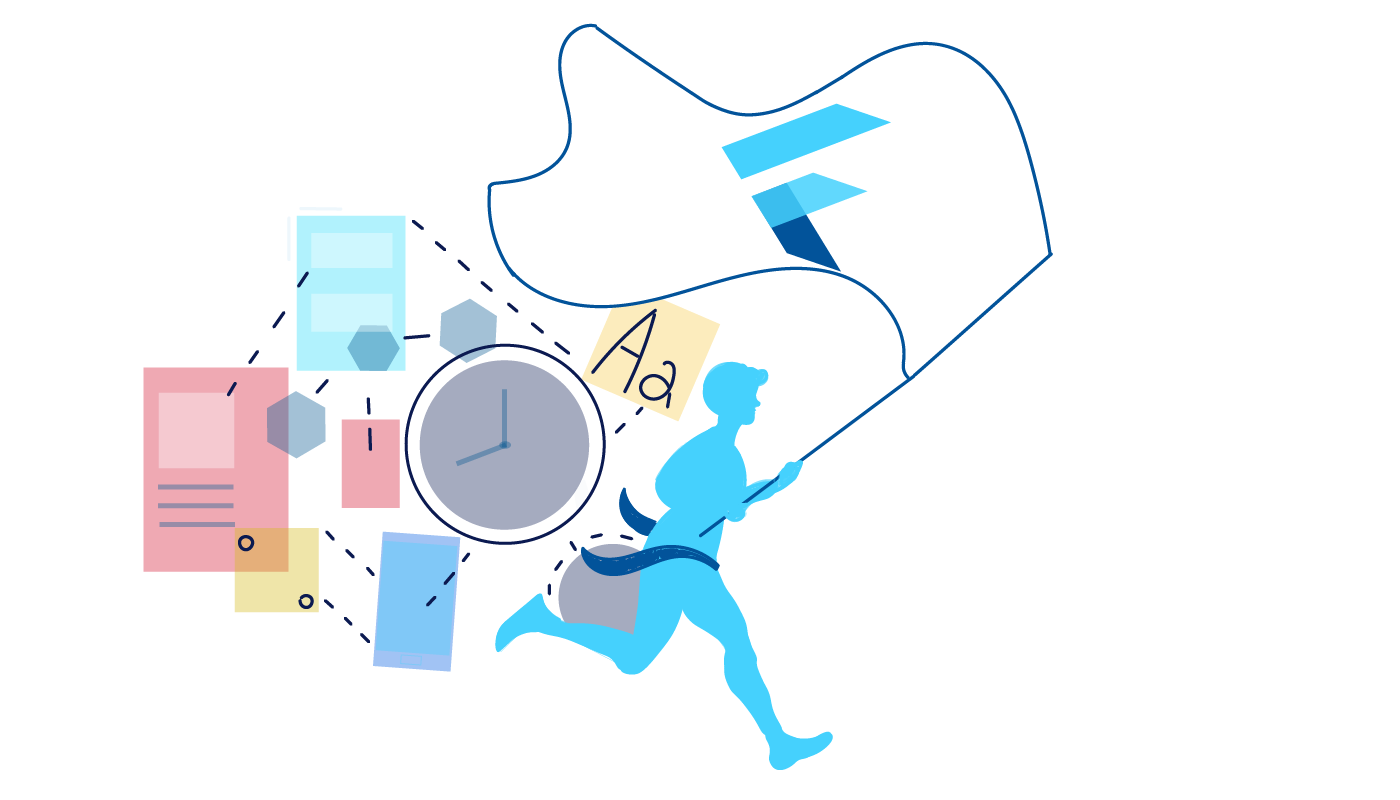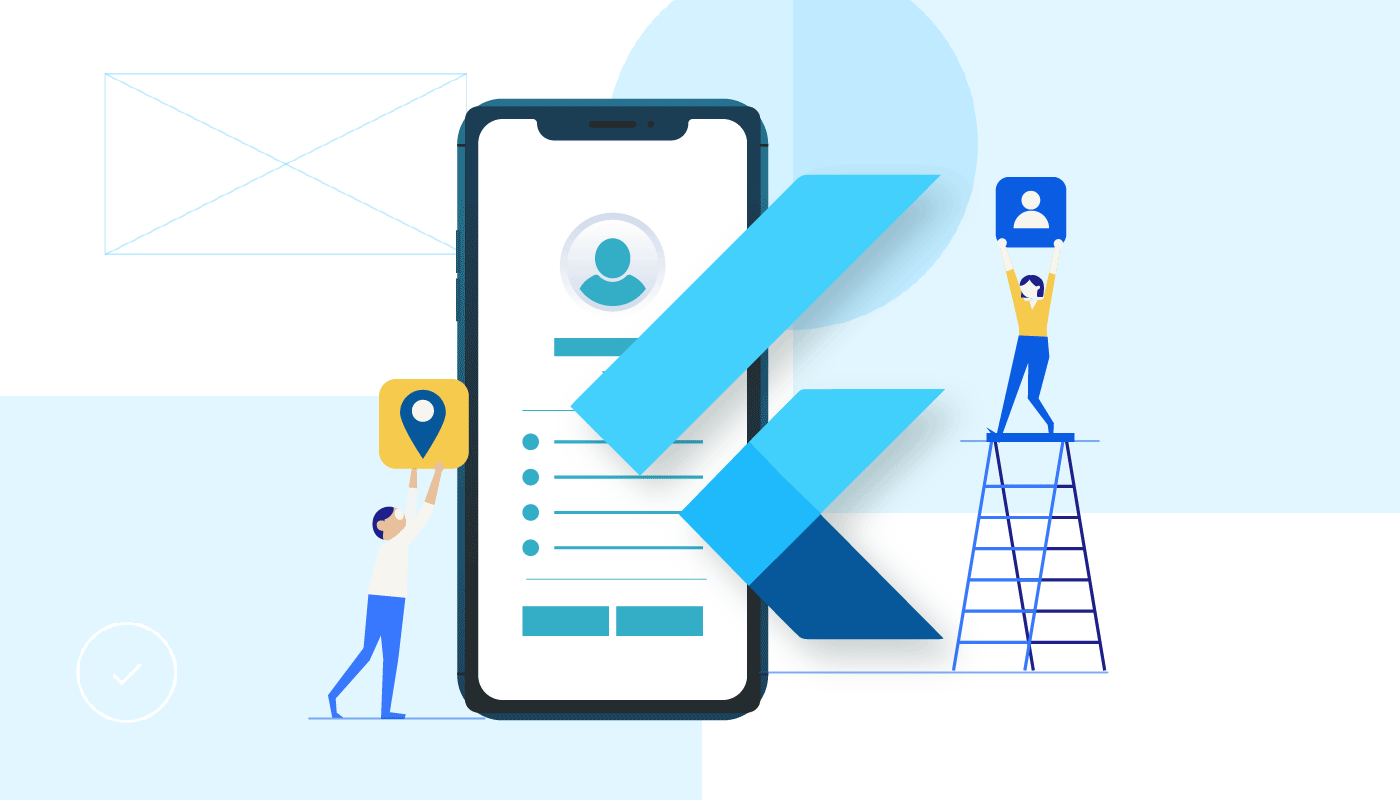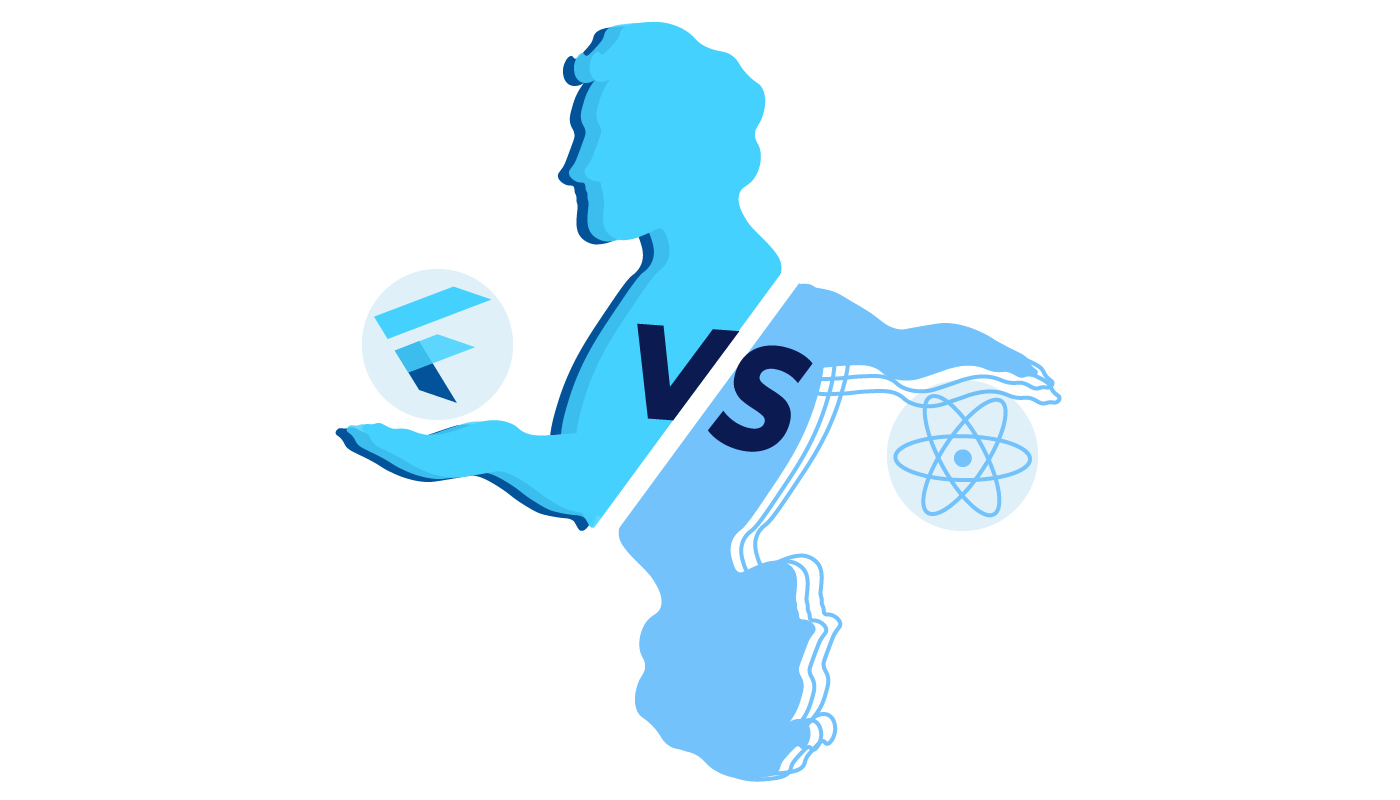If you’ve been operating on the software development market for pretty long now, you’re probably aware of hybrid technologies that evolved with the rise of cross-platform development tools, such as PhoneGap, Xamarin, Cordova and others. While native was considered to be the golden standard on the software market, its accessibility and flexibility remained to be the primary barriers for its wider adoption.
Thus, cross-platform technologies appeared to meet this challenge and allow building software solutions that can be launched on several platforms simultaneously having a single codebase in their foundation. While most of these hybrid tools are dead now (mostly because they needed improvement or were rather limited in use), only React Native and Flutter frameworks are in the game for most of the projects.
With 4 years of active development and solid community support, React Native seems to be an undeniable leader. But it’s not that cut and dried. Its younger counterpart — Flutter — is one more framework for developing appealing applications for iOS, Android and Desktop OS (Windows, Linux and MacOS), which promises to become the new native with its own rendering engine and impressive capabilities.
Why Flutter should be a must tool in your tech stack, how it is going to transform, what is the future of the software development market and many other questions we are going to address in this article. Read on to get a brand-new perspective on cross-platform development!
Flutter and FuchsiaOS — The New Native?
Flutter is often called “Google’s most ambitious framework,” and there is a good reason for it. The cross-platform framework has recently consolidated its effort on the development of Dart and its related SDK. Flutter is expected to become the central point of access to its most promising platform — FuchsiaOS, where Dart will be the primary native application development language. As the dispute between Google and Oracle progresses, the first one is looking for a way to disrupt the market with its own operating system that will stand out as the tech of the future.
Although nobody except the core team at Google knows the full spectrum of possibilities Fuchsia will deliver to developers and users, the new operating system is already projected to become the leading player in the desktop operating landscape. In this case, Dart will occupy a significant share of the native development market with its impressive hybrid capabilities, making it challenging for the current JavaScript ecosystem to survive. Thus, development with Flutter will soon become more beneficial than ever before.
But before we deep dive into details, let’s run through the basics and expand more on Flutter framework and its applications in software development.
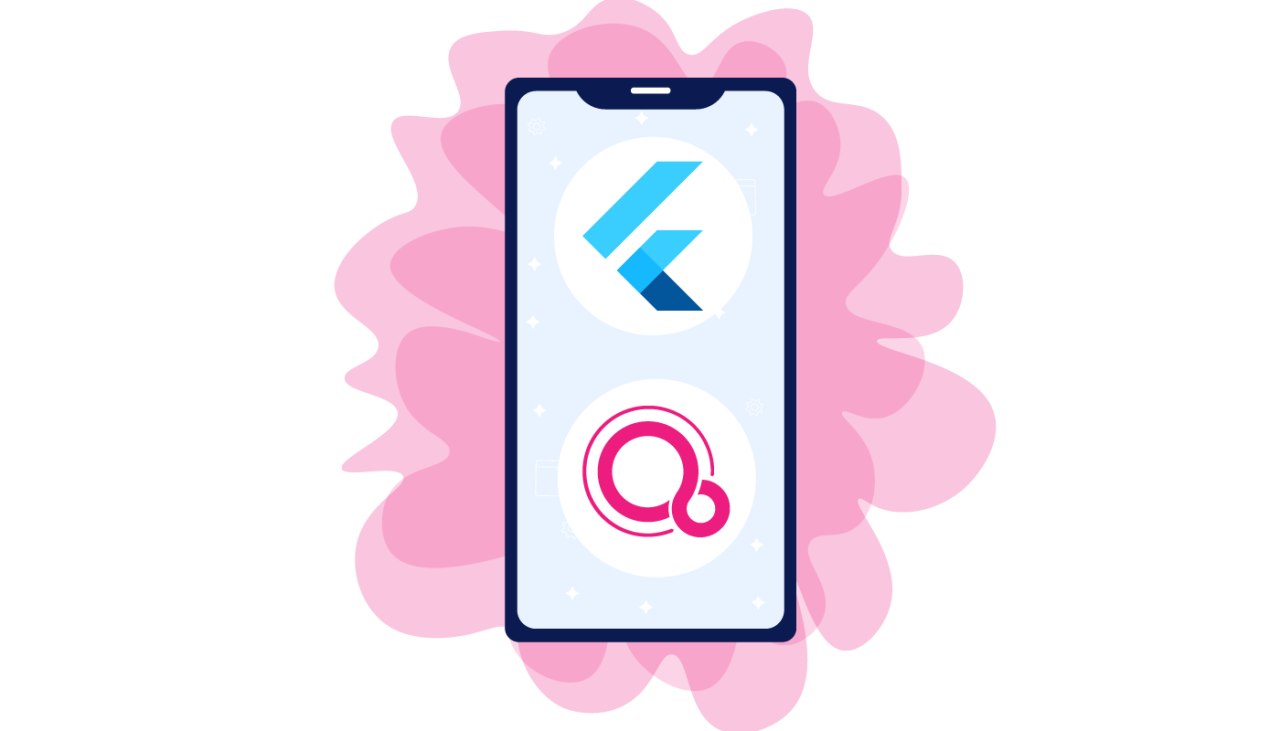
What is Flutter?
Flutter is a mobile development framework released by Google in 2017 that enables developers to build native-like applications that can be launched on several platforms with the help of a single coding language and one codebase.
The structure of Flutter is pretty simple as it consists of two major components:
A Software Development Toolkit is a collection of software development tools in one installable package that enables you to build appealing and interactive mobile apps.
A Framework is a structure of reusable UI elements which you can use and customize according to your development needs. Since Flutter has its own rendering engine, you can create widgets and make them look native on any device.
For more information about Flutter apps, you can go to this article and weigh up all the pros and cons of this technology.
How Flutter Came into Existence
Flutter appeared as an experiment to revolutionize the traditional layout structure and create something completely different from other technologies we used to see on the market. Xamarin, PhoneGap, Ionic and Apache Cordova were the ones of numerous efforts to provide software developers with convenient and self-sufficient tools to develop scalable applications. But they all shared one problem — the absence of native user experience.
Many would argue that cross-platform software is almost as fast and responsive as native one. Hybrid apps can demonstrate exceptional performance and run on many mobile devices. But if you strive to create an interface that will look native and appeal to your target audience, you’d probably need to spend more time finding the solution.
This problem was successfully addressed by the Flutter team at Google. With a new layout structure and own rendering engine, Flutter addresses this issue allowing software engineers to create stunning and user-friendly apps.
Apart from that, Dart, the programming language that lies in the foundation of the framework, is expected to be used for native development in FuchsiaOS. So, developing a framework that would allow drawing native elements and building stunning interfaces was of a paramount importance.
What are Flutter Benefits?
If you’ve been mulling over the idea for iOS and Android apps, perhaps a good decision would be to stick to Flutter SDK. With this highly customizable framework, you not only have a chance to scale your app fast and launch it on the platform of your choice but also prepare it for the launch of Google’s promising operating system.
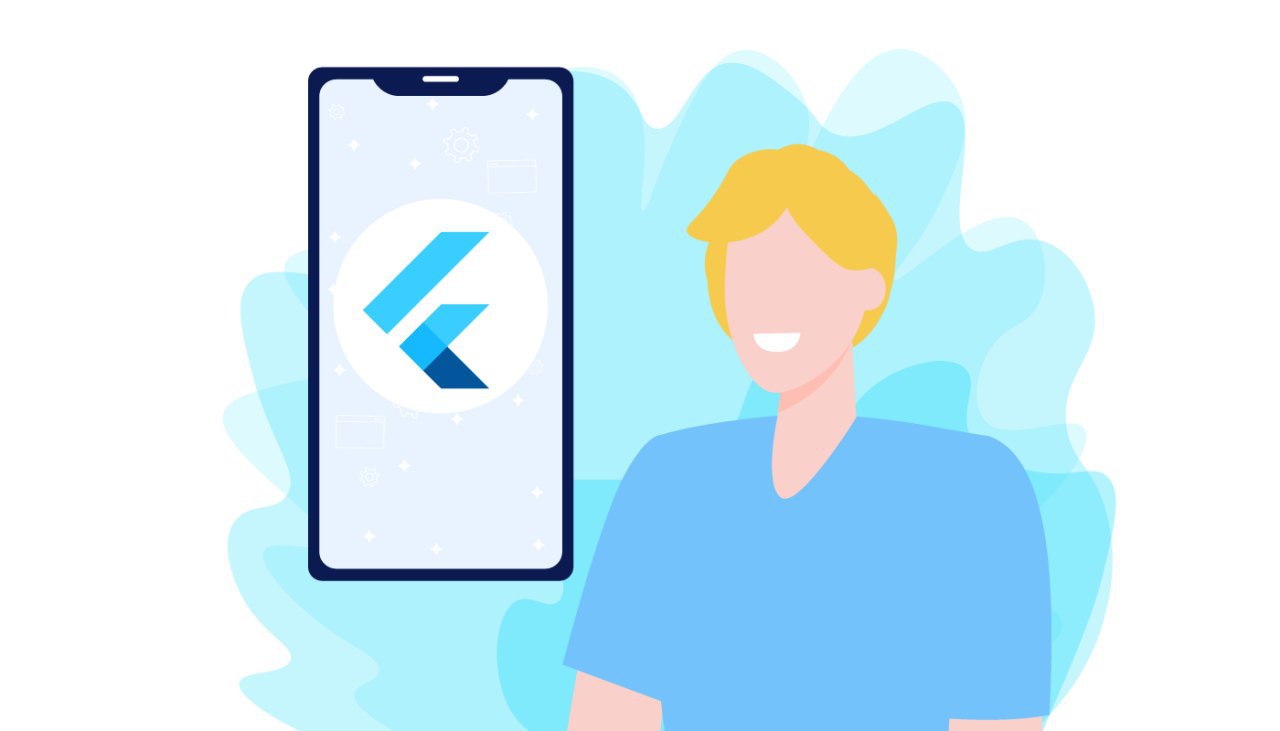
If that is not convincing enough, here is a set of other good reasons for Flutter to become native soon and substitute many leading players on the market:
Reduced Development Time
Thanks to dynamic coding, developing with Flutter is fast and convenient. Especially, if you want to launch your app on several platforms, Flutter might make a good match for you with its compatibility. Thus, your software will look native on any device.
Layout Structure
Flutter SDK stands out with its layout structure that mostly resembles native approaches in platform UI development. It also does not inherit its roots from the web (and therefore markup languages) and turns all objects into widgets. Layout approaches are quite intuitive and familiar to those who came from native mobile app development and desktop one.
Performance
To grasp an idea of how Flutter operates, it is better to compare this SDK to other cross-platform technologies. The majority of cross-platform tools use the same building blocks as iOS or Android but they apply a bridge to communicate with native modules.
Flutter, on the other hand, is compiled to machine code which provides a better app performance. Sometimes a Flutter app could be a bit faster than a native one. But it highly depends on the type of device you use and the OS version.
Cost Efficiency
Due to reduced development time, you can save up your budget and invest in strategically important areas, such as marketing. Flutter is on the rise now, which means many software engineers are considering the possibility of migrating to more promising technologies. Therefore, finding a skilled Flutter developer should not be a problem. Besides, transition to Flutter is quite straightforward for developers who have experience in iOS and Android app development.
Apart from that, there are many software development vendors out there ready to provide you with the team of Flutter developers. So, if you’re looking for a complex and cost-effective solution, that might be a good option to consider.
Almost Native UI
In contrast to other hybrid technologies where you should build a bridge to integrate native components, Flutter handles this task easier with the help of its own rendering engine.
While rendering your apps, Flutter undergoes through four major steps:
- Layout Phase. The framework determines the size of each project and its place in the structure.
- Painting Phase. Flutter attaches each widget to a canvas and commands to paint it.
- Compositing Phase. The tech assembles the whole scene and sends it to the GPU for further processing.
- Rasterizing Phase. The scene is composed with the help of pixels and displayed to the user.
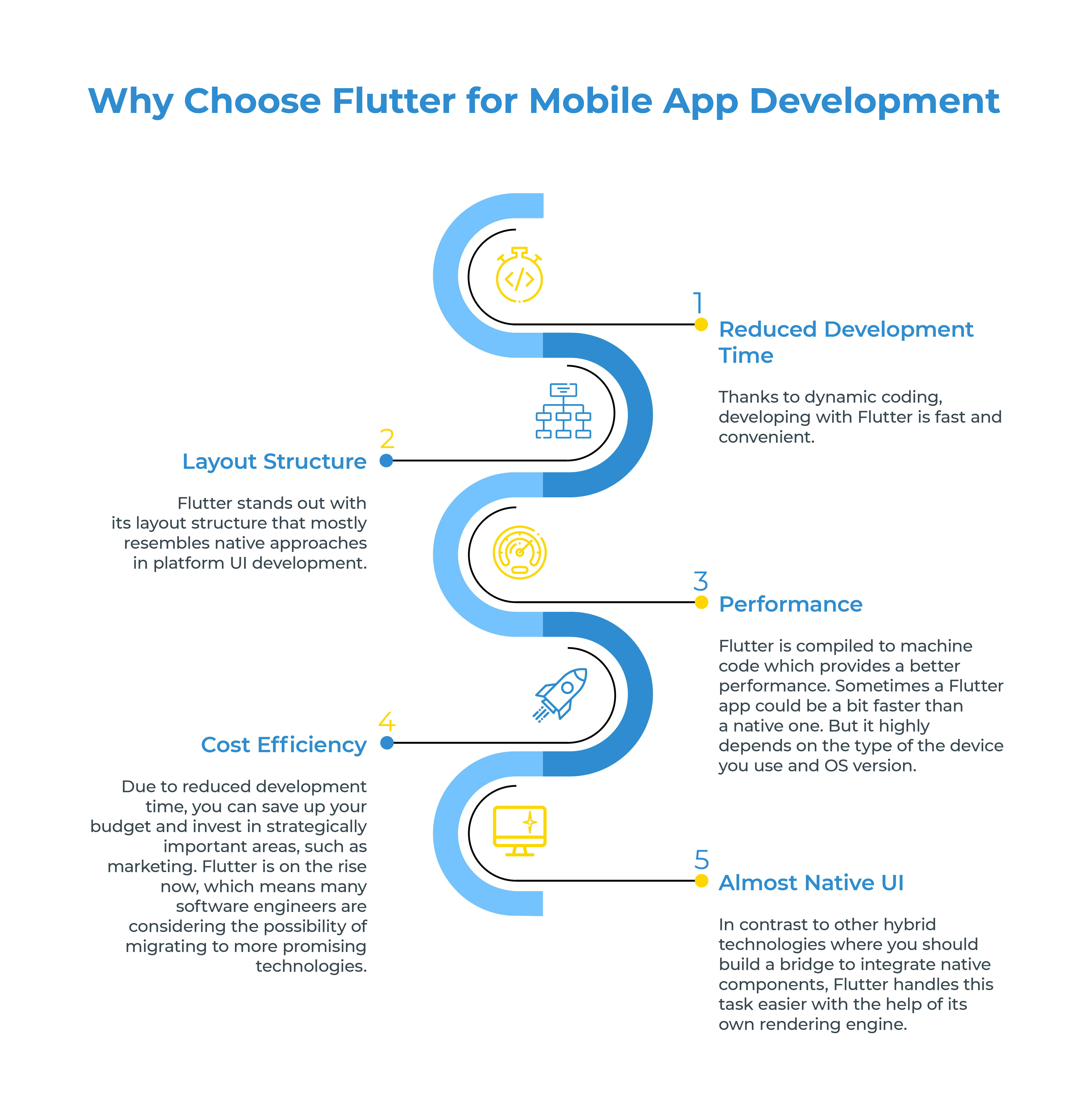
Recent Flutter Updates
The latest update to the framework was released on October 1.The team introduced Flutter 1.22 which came with the support for Android 11 and iOS 14.
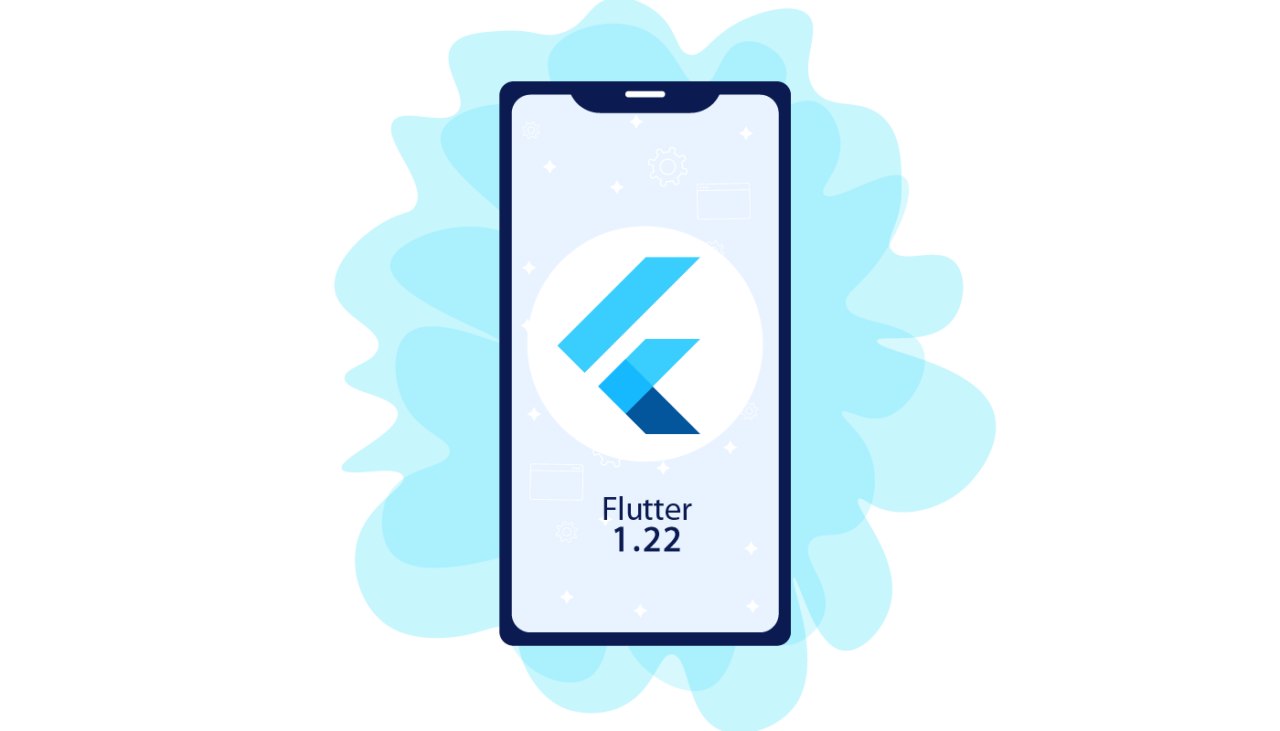
In addition to that, developers also released one of the most demanded features for Android the whole community was waiting for:
- State-restoration
- Material buttons
- Localization support that works with hot reload function
- Platform Views
- A new Navigator
- And lots of other features that simplify the work of Flutter developers.
These updates will ease the work of software engineers, providing them with innovative tools to build stunning applications that can run on several platforms.
The Future of Flutter
The future of Flutter looks bright. In several years, the Flutter framework is expected to substitute modern techs, providing an easy and convenient way to create native user interfaces with all the features shared by a particular platform. Oracle vs. Google debate won’t end soon, which means it is better to prepare in advance. With the launch of Fuchsia, Flutter will gain momentum as it will become the core tech for native development on the newly launched platform.
As the framework and community progress, this technology will substitute many market leaders, providing developers with the necessary tool for seamless development and businesses with a cost-effective software solution. And with the release of FuchsiaOS, it would be easier for companies to broaden their audience and adapt their products for a new operating system. So, if you question “Is Flutter the future of mobile app development?”, it actually is.
“Flutter will definitely become the “native of the future”. Flutter’s rendering model enables software engineers to draw native elements, eliminating the need for bridges. It means you can create interfaces that will be familiar to the user and align with the requirements of the chosen platform.”
Viacheslav Petrenko, Chief Technology Officer at LITSLINK
Wrapping up
Flutter might become a great match for you if you run an Android-first company and strive to operate on the software development market for at least 5 years. It is probably more beneficial to bet on the tech of the future instead of using popular technologies we are all pretty used to. By investing today in new technologies, you create the foundation for your company to progress in the world of the future!
If you have any questions about Flutter app development or you’re looking for a reliable vendor, reach out to the first-class Flutter development company in the USA. We will look into your project to come up with the optimal solution and accurate estimate!


